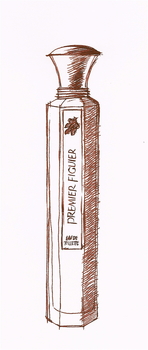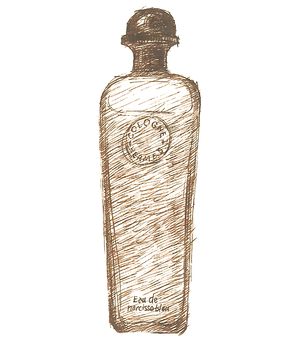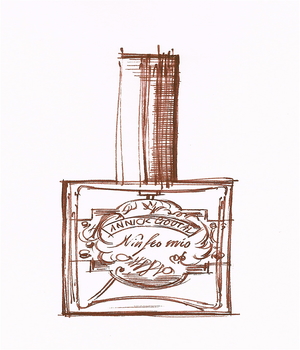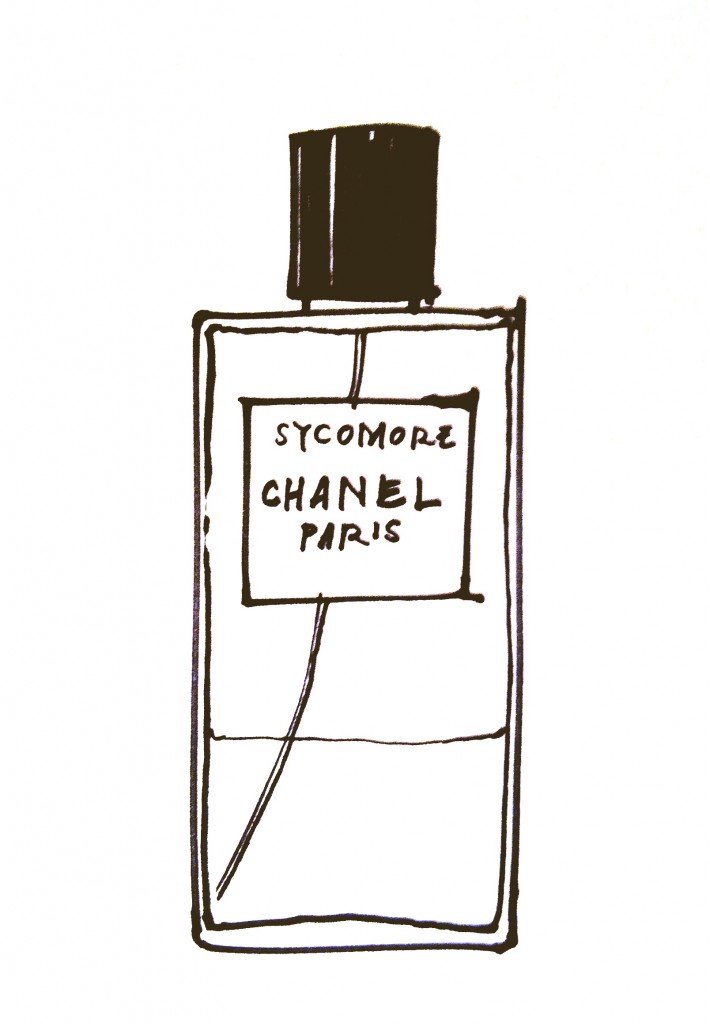Tagged With ‘fig’
L’Artisan Parfumeur
Premier Figuier
20 October, 2017
 L’Artisan Parfumeur began life in as a small independent brand back in 1979, when Jean Laporte opened his first boutique on Paris’s Rue de Grenelle. Laporte (who had already founded Sisley Paris in 1972) trained as a chemist but had a keen nose, and his first commercial fragrance, Mure et Musc, really captured the spirit of its time. A sweet, slightly hippyish scent, combining blackberries and musk, it established his name and became a big seller in the newly emerging niche-perfume market.
L’Artisan Parfumeur began life in as a small independent brand back in 1979, when Jean Laporte opened his first boutique on Paris’s Rue de Grenelle. Laporte (who had already founded Sisley Paris in 1972) trained as a chemist but had a keen nose, and his first commercial fragrance, Mure et Musc, really captured the spirit of its time. A sweet, slightly hippyish scent, combining blackberries and musk, it established his name and became a big seller in the newly emerging niche-perfume market.
Jean Laporte sold up in 1982 and went on to found the smaller but highly regarded Maitre Parfumeur et Gantier, but L’Artisan Parfumeur continued to expand, fuelled by a run of ground-breaking fragrances. After a long, slow drift into the perfume wilderness, the brand was bought by the Spanish giant Puig, which has given it a much-needed makeover, though it can hardly be regarded as a small independent any more.
Premier Figuier, created by Olivia Giacobetti and released in 1994, very much lives up to its name, in that it was the first perfume to really smell of figs (the fruit but more especially the leaves). I love their scent, which is intensely green and slightly earthy and somehow very sexy, which surely has something to do with their association with baking Mediterranean heat.
Premier Figuier captures that scent perfectly, managing to smell both fresh and slightly sultry at the same time; it also lasts for most of the day. For many years it has been among my favourite fragrances, but not long ago someone pointed out that, like some other perfumes, it has the odd property of also smelling weirdly similar to something else – in this case coconut, which is a scent I’ve never much liked.
As a result, now I get the olfactory equivalent of double vision every time I wear it, which (much to my regret) has slightly lessened its appeal. But don’t let that put you off: if you can ignore my spoiler alert it’s well worth trying.
Hermès
Eau de Narcisse Bleu
10 October, 2014
 Pretty much everyone I know loves Hermès’ deliciously fresh and zingy Eau d’Orange Verte, so when Eau de Narcisse Bleu (literally ‘blue narcissus water’) was launched in 2013 it had a tough act to follow. As I’ve never seen a blue narcissus / daffodil, I think it’s safe to say that this perfume has an element of fantasy about it, and as a smell, too, it’s perhaps rather more complex and a little less instantly accessible than its predecessor. But give it a little time and I think it’ll grow on you.
Pretty much everyone I know loves Hermès’ deliciously fresh and zingy Eau d’Orange Verte, so when Eau de Narcisse Bleu (literally ‘blue narcissus water’) was launched in 2013 it had a tough act to follow. As I’ve never seen a blue narcissus / daffodil, I think it’s safe to say that this perfume has an element of fantasy about it, and as a smell, too, it’s perhaps rather more complex and a little less instantly accessible than its predecessor. But give it a little time and I think it’ll grow on you.
Eau de Narcisse Bleu may not have the euphoric mood-lifting freshness of Eau d’Orange Verte, but it has a gentle softness that, once you’ve smelled it for a while, is extremely appealing in its own right. It does have the faint sweetness of real daffodil flowers (try sticking your nose in one on a sunny day next March and you’ll see what I mean), but what narcissus extract smells of most, rather unexpectedly, is fresh hay. *
Now, I have nothing against smelling of hay, which is a lovely scent in its own right, but what Hermès’ much-mythologised perfumer, Jean-Claude Ellena, has done is blended the smell of hay with a whole raft of subtly complementary fragrances. Most of them are quite ‘green’ – that is, they smell fresh and natural, like grass and leaves, but not especially sweet or flower-like.
To me it has a slight but definite scent of fig-leaves, which for anyone who loves L’Artisan Parfumeur’s wonderful Premier Figuier as much as I do can only be a good thing. Whether this figginess is (excuse the pun) a figment of my imagination I’m not sure, but among the other ingredients that Ellena lists is galbanum, which is extracted from the root of a wild Iranian plant that looks a bit like fennel or cow-parsley, and indeed is distantly related to them.
Galbanum has a marvellously fresh sappy smell like newly-snapped pea-pods, and is one of the most important components of ‘green’ perfumes, but its greenness, here, is tempered by the hay-like sweetness of narcissus, with a hint of earthy bitterness underneath which manages to stop it from smelling at all girly.
If my description makes it sound a bit complicated, don’t be put off, for it’s such a well-blended perfume that there’s nothing discordant about it. In fact if anything it is, perhaps, a little too gentle for its own good, as it’s a ‘quiet’, thoughtful scent that stays close to your skin and doesn’t, on the whole, grab other people’s attention. It’s discreet and refined, in other words, rather than a ‘look-at-me’ perfume, which is perfect if you want to smell good without drawing attention to yourself. Go try it.
* I say ‘narcissus extract’, but one of the irritating things about perfume marketing is how vague – and frankly clueless – most descriptions of perfume ingredients actually are. For as anyone who actually grows the things themselves knows full well, a bright-yellow daffodil like Narcissus ‘February Gold’ smells very different to Narcissus papyraceus, the so-called paperwhite narcissus; the former has a gentle, hay-like scent, while one of the big selling-points of paperwhites is their powerful, almost jasmine-like perfume, the sweetness of which, en masse, can have a touch of the slightly repellent stagnant-water smell that perfumers refer to as ‘indolic’. If only perfume PRs were taught some basic botany.
Postscript – mystery solved, but only by going to the source: in France last week I visited IFF-LMR, the legendary natural raw perfume materials company near Grasse, and what should we get talking about but their narcissus extract, which is derived from the beautiful Narcissus poeticus, fields of which grow wild in the uplands of the Lozère. Did they use other species of daffodil as well? No, came the answer, and it’s their extract that you’re smelling (among many other things) in Eau de Narcisse Bleu.
Annick Goutal
Ninfeo Mio
2 August, 2014
 This is the second time I’ve stumbled across a delicious perfume in, of all places, TK Maxx. I know I should be saving up and buying beautifully wrapped bottles from expensive boutiques, but for a start I don’t earn much and, second, I rather like the occasional gamble on a discounted scent that might just turn out to be fab.
This is the second time I’ve stumbled across a delicious perfume in, of all places, TK Maxx. I know I should be saving up and buying beautifully wrapped bottles from expensive boutiques, but for a start I don’t earn much and, second, I rather like the occasional gamble on a discounted scent that might just turn out to be fab.
That’s certainly the case with Ninfeo Mio, a small bottle of which I picked up for a song a little while ago. I’m a bit of an Annick Goutal fan, mainly for the powerful, love-it-or-hate-it Sables, but also for the better-known Eau d’Hadrien, so Ninfeo Mio seemed worth a bet – and I’m glad I took a punt.
This unisex perfume was launched in 2009 and created by Isabelle Doyen, who was Annick Goutal’s assistant, and took over the development of new perfumes after Goutal’s death in 1999. The first thing you smell is fig, and actually that’s pretty much the last thing you smell too, and that would be just fine and dandy with me, since fig is a scent I love – both the natural thing and figtastic perfumes like Premier Figuier from L’Artisan Parfumeur and Philosykos from Diptyque.
But the fig in Ninfeo Mio is mixed with lemon and lavender, musk and hedione, the chemical that gives Eau Sauvage much of its particular magic. These add to the character of the scent, but I think they also accentuate the figginess of the fig, which is fresh and green and slightly sweet but also a little bit dirty, with something of the sexiness of fresh sweat. It’s not, perhaps, as refined a perfume as Premier Figuier, but I love its in-your-face earthiness.
As is so often the case, the name and the marketing ‘story’ came after the scent, or at least after it was begun. It refers to the much mooned-over gardens of Ninfa in the once-malarial marshlands south-east of Rome, which (luckily for Isbelle Doyen) turned out to be full of lemon-trees, lavender and figs. The perfume would probably have been called Ninfa Mia except that the name ‘Ninfa’ had already been copyrighted, so the more masculine Ninfeo Mio it is.
Chanel
Sycomore
28 May, 2014
 Until recently, Sycomore was one of the most extraordinary perfumes that I know (see note, below). OK, its name looks like a misspelling of sycamore, a tree that – in Britain at least – no right-minded person would name a fragrance after. Sycamores, after all, are as common as muck, breed like rabbits and are often looked down on by ecologists as they’re not even native trees.
Until recently, Sycomore was one of the most extraordinary perfumes that I know (see note, below). OK, its name looks like a misspelling of sycamore, a tree that – in Britain at least – no right-minded person would name a fragrance after. Sycamores, after all, are as common as muck, breed like rabbits and are often looked down on by ecologists as they’re not even native trees.
Acer pseudoplatanus, to give the tree its proper botanical name, is also responsible for many of those deeply irritating ‘leaves on the line’ excuses that railway companies give out each autumn to explain why their trains are running late. Worst of all, from a perfume perspective, they don’t even really smell of much, though their leaves do have the faintest leathery scent and their wood, once dried enough, burns with a pretty generic woodsmoke smell.
So is Sycomore just an example of misguided marketing, like Ralph Lauren’s dreadfully named Glamourous? Actually, no. Coming from arguably the world’s most tightly policed brand, its name will have been very carefully considered – and actually it almost certainly refers not, as I’d initially thought, to Acer pseudoplatanus at all but to a rather more exotic tree, the so-called Sycomore fig.
Ficus sycomorus (to use its Latin name) is a large, spreading tree that grows across central Africa and the Middle East, where its heavy shade is much appreciated; it was known to the Egyptians as the Tree of Life. It’s a tree I haven’t sniffed, but my guess is that it shares at least some of the dry, green, slightly fruity scent that we know from other varieties of fig – though ironically there’s only the faintest hint of figginess in Sycomore.
Anyhow, enough about the name. What makes Sycomore extraordinary, for me, is a trick it seems to be able to do that no other perfume I’ve come across seems to be able to do. This is to smell like two completely different scents, depending on whether you smell it close up or at a distance. Up close it has the strong, earthy, pleasantly bitter scent of vetiver, the root of an Indian grass that’s related to lemongrass and citronella. It’s also grown commercially in the Caribbean, and apparently Chanel’s super-high-quality vetiver originated in Haiti.
Vetiver is usually classed as one of the great masculine fragrances, presumably because of its bracing bitterness and lack of cloying sweetness; it’s certainly not a flowery smell. But it also has a warmth and – get this – a touch of smokiness that gives it extra depth and complexity, especially when it’s surrounded by such a delicious cushion of other scents, which mix smokiness with a slightly sweeter touch of fruit. Vetiver is also famous for its staying power, and a spritz of Sycomore can last you all day.
It’s the added fruitiness that, on occasion, one gets a whiff of when someone wearing Sycomore strolls by, and then it’s like a different, warmer, sweeter fragrance altogether, with hardly a hint of the vetiver that dominates the perfume on the skin. If it’s an intentional trick I’m in awe, though it seems perfectly possible, given that Sycomore was created by Chanel’s chief nose Jacques Polge in collaboration with Christopher Sheldrake, the legendary British perfumer who has been Chanel’s director of research and development since 2005.
Like the other fragrances that belong to Les Exclusifs de Chanel, Sycomore costs about twice as much as your average perfume, but it does come in a typically (for Chanel) handsome bottle, beautifully presented in a chunky white-and-black box. The hidden magnet in the heavy black cap, ensuring that the iconic twin Cs of the Chanel logo always end up perfectly aligned, is a particularly nice touch, even if it has since been adopted by one or two other brands.
Though it’s a classically masculine scent Sycomore is (quite rightly) marketed as a unisex fragrance, and like most men’s perfumes it can smell wonderful on a woman. Yet what I love most is that, from the very first sniff, it has a wonderful feeling of luxury, quality and depth, which are things that are all too often lacking in other perfumes. And who could resist its baffling cleverness, like a cryptic crossword in scent?
Autumn 2016 update. Oh dear: evidently Sycomore hasn’t been a commercial success, as Chanel have recently ‘updated’ it, and now – minus the fruitiness that made it so unusual – it’s a perfectly pleasant, fairly straight-up vetiver. From being unique it’s become one of many. Such a shame – another great perfume gone.